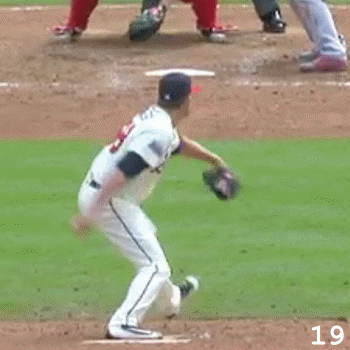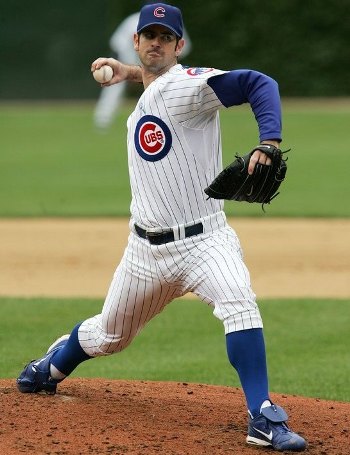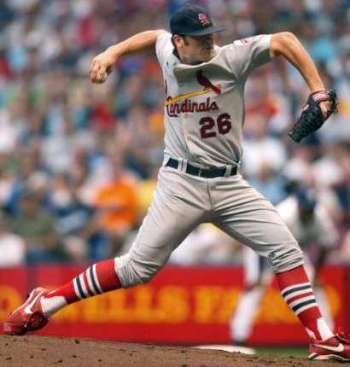This tweet by Jeff Passan...
...has sowed considerable confusion about the Inverted W; whether it's a problem or not and what I have claimed. As a counterpoint to Jeff Passan's tweet, here's what Dr. Douoguih, the author of the study, told me.
I told (Passan) that our data showed an increased injury rate requiring surgery in pitchers who exhibited the inverted W, it just didn't reach statistical significance. Because it did not reach statistical significance I can't make the claim that the inverted W increases injury risk.
My hunch is that it does.
I appreciate your pioneering efforts and would never try to discredit your work in a malicious fashion like that. I know we don't really know each other that well but I do hope that you don't get too down on yourself because people want to shoot down your effort to shed light on a complex subject.
It usually means that you're on to something.
In this piece and others, I discuss Dr. Wieimi Douoguih's study of the Inverted W and Jeff Passan's misrepresentations and outright lies in The Arm about the Inverted W and my work.

The End of Daniel Winkler's Elbow
In sum, Daniel Winkler's Inverted W is just as damaging as it looks, as the recent failure of his elbow makes clear.
Douoguih's Study of the Inverted W
Dr. Douoguih's study of the Inverted W was prompted by his hearing me say the following during an interview about the Inverted W on a D.C. radio station.
What the not so durable guys do is they take their elbows back but they also take them up. Now, that's actually painful to do, but it's not that bad in and of itself. The problem is that when you take the elbows back and up, you can end up with a Timing problem.
Dr. Douoguih then put together the study to test both of the claims I made...
- The Inverted W isn't (that) bad in and of itself. It can cause problems but doesn't always do so.
- The real problem with the Inverted W is the Timing problem it can create. Again, can not always does.
I'll let Dr. Douoguih give the bottom line on his study, as he did to me in a recent e-mail.
I told (Passan) that our data showed an increased injury rate requiring surgery in pitchers who exhibited the inverted W, it just didn't reach statistical significance. Because it did not reach statistical significance I can't make the claim that the inverted W increases injury risk.
My hunch is that it does.
I appreciate your pioneering efforts and would never try to discredit your work in a malicious fashion like that. I know we don't really know each other that well but I do hope that you don't get too down on yourself because people want to shoot down your effort to shed light on a complex subject.
It usually means that you're on to something.
In sum, it's rather bizarre that so many people try to use this study against me when the person who created the study believes it back me up.
The Real Problem with the Inverted W
As I explain at length in my piece on the subject of Timing, the Inverted W is NOT the root cause of the elbow and shoulder problems you so often see in pitchers who make the Inverted W. Yes, Mark Prior was (in)famous for his Inverted W, but it wasn't what ultimately got his shoulder.

Mark Prior
Rather, the root cause of the elbow and shoulder problems you so often see in Inverted W pitchers is the Timing problem the Inverted W can cause; a problem that, in its worst form, I call Flat Arm Syndrome.

Anthony Reyes
Similarly, in the picture above of Anthony Reyes, the main concern is NOT the height of his elbows. Rather, the main concern is that Anthony Reyes' forearms are at best flat at the same time his front has planted and his shoulders are starting to turn.
I have said this since 2007, and it's exactly what Dr. Douoguih's study of the Inverted W found.
The History of the Douoguih Inverted W Study
On August 21, 2010, Stephen Strasburg was removed from a game with an apparent injury. The initial diagnosis was that Strasburg had a strained tendon in his forearm. However, further testing revealed that he had a significant tear in his Ulnar Collateral Ligament and would require Tommy John Surgery.
I live-blogged that in my analysis of Stephen Strasburg's pitching mechanics, which was read by a number of people. On August 31, 2010, I did a telephone interview about Stephen Strasburg's pitching mechanics and the Inverted W with 106.7 The Fan in Washington D.C. At 2:50 into the interview I said...
What the not so durable guys do is they take their elbows back but they also take them up. Now, that's actually painful to do, but it's not that bad in and of itself. The problem is that when you take the elbows back and up, you can end up with a timing problem...When a pitcher throws, when their front foot plants, the shoulders start to rotate. If you scap load with the Inverted W or the Inverted L or the Inverted V that I talk about, your arm's gonna be late. It's not gonna be in the right position when your glove side foot plants, so then the shoulders start rotating and the arm comes around especially hard, which puts a lot of load on the elbow and the shoulder...The problem is your sequencing is wrong. You're turning the shoulders before the arm is ready...Your arm's getting overloaded.
Note the use of the word "timing" and, more importantly when it comes to Jeff Passan, the use of the word "can" and not "does" or "will."
Dr. Weimi Douoguih, medical director for the Washington Nationals, happened to hear that interview. He found the premise interesting, and he commissioned a study to test it.
His research first produced an Inverted W study poster in 2012. He then published a paper that reviewed his study of the Inverted W and Timing in 2015 (note the corrections).
Recently, I posted some comments about Jeff Passan's Inverted W tweet.
Why the Small Effect Size?
While the Douoguih study of the Inverted W found a statistically significant relationship between Timing problems and injuries, no relationship was found between the Inverted W and injuries and the statistically significant relationship was small.
Why?
The Douoguih study was intended to be a quick,, high-level, "Let's see if there's anything to what this guy is saying," kind of study. As a result, there were two limitations to it...
- The Inverted W was compared to every other arm action combined. I would argue, and I believe Dr. Douoguih would agree, that this likely affected the findings.
- The study looked at only the worst but rarest form of Timing problem -- Early Torso Rotation -- rather than general Timing problems.
I believe that if you...
- Did a more granular comparison of arm actions.
- Looked at general Timing problems rather than just Early Torso Rotation.
...you would find a larger effect size.